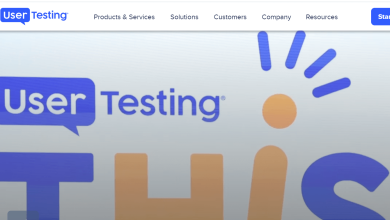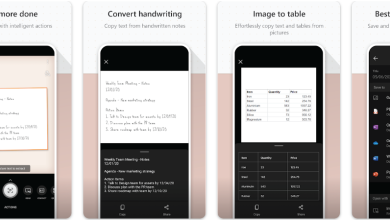Going Back to the Office? 6 Questions You Should Ask About Your Commute

Let’s face it: there’s no perfect way to make your daily commute. Regardless of which method you choose, there are going to be days when you’re semi-miserable. From snarled traffic to bad weather, commuting to and from work isn’t usually fun. But it’s necessary — especially now, when you may be transitioning back to the office post-pandemic.
From buses to bikes, there are several types of transportation to choose from, and your choice will most likely depend on a few things. For example, where do you live? What public transportation do you have access to? How much are you willing to spend?
Below are six questions you should ask yourself to help decide on the right type of transportation for your daily commute:
1. What Do I Want to Get Out of This Commute?
The first thing you should consider is your overall goal. Are you trying to arrive at your destination quicker? Do you want to get some exercise in the process? Are you tired of sitting in traffic every day and looking for an alternative way to get around? Or maybe you want a more scenic journey that helps calm your nerves before you begin your workday.
By answering the questions above, you’ll be able to determine the best type of transportation for you. For example, if you want to avoid traffic, taking the subway or riding an ebike might be better options than taking an Uber.
2. How Much Money Do I Want to Spend?
Depending on where you live, the cost of transportation will vary. However, according to 2019 Bureau of Labor Statistics data, average transportation costs for a U.S. household are $10,742 a year. That’s almost $900 a month!
The good news is, there are ways to cut those costs. From carpooling with your co-workers to using public transportation a few times a week, you don’t have to spend a fortune to commute.
When choosing between different types of transportation, you should first figure out how much you’re willing to spend. After all, if you can’t afford a car, insurance, and gas, you should probably cross “driving” off your list. Look to carpooling, biking, or public transportation instead.
According to research, using public transportation instead of driving a car can save a considerable amount of money. Not only will you save on gas and car insurance, but you can forgo routine maintenance and the cost of parking. Not to mention, public transportation also helps save the environment because it produces less air pollution than single-driver vehicles.
3. How’s the Weather?
This probably goes without saying, but where you live determines what options you have for transportation. Weather is an important factor. If you live in New York City, walking might be a great way to get to work in the summer. But once winter hits, walking in the snow might be a challenge. Furthermore, bad weather brings an uptick in mass transit use, which will most likely cause delays.
You should also take a close look at your neighborhood. Are you within walking distance of a subway station or bus stop? If not, does that mean you have to drive to the office every morning?
Keep in mind that you don’t have to commit to only one type of transportation. You could drive to the nearest train station, which will consume less gas, and where parking may be free or cheap. Or you can switch up your means of travel depending on the season or weather.
4. How Much Time Do I Have?
This is an important question because not all transportation will get you to your destination in a timely manner. For instance, while a subway moves quicker than a car, they make several stops along the way. If you’re crunched for time and can’t catch an express train, a subway might not be your best bet.
On the flip side, maybe traffic is so congested in your city that traveling underground will save time regardless. You can plan accordingly so that even with the stops, you’ll arrive to work on time.
5. What’s the Safest Option?
Your safest option may come down to a matter of opinion. There’s no denying the facts — you’re more likely to get into a car accident than be on a train that derails. Nevertheless, you might still feel safer in a car.
Why? Maybe you have a lifelong fear of trains. Or maybe you’re uncomfortable being around so many strangers — especially while Covid still lingers. Either way, you have to determine the safest option for you.
You should also keep in mind what and whom you travel with. For instance, if you carry a briefcase filled with expensive electronics and sensitive information, you might not want to ride public transportation. If you take your kids to school on the way, driving might be less hassle than waiting for the bus.
6. What Type of Transportation Is Most Reliable?
Before you’re hired for a job, many employers ask whether or not you have reliable transportation. But what does that really mean? Employers don’t really care how you get to work, as long as you get there when your shift starts.
This is something you should consider when looking for the right type of transportation. For example, trains can run late. In fact, the federal Surface Transportation Board considers a train “on-time” if it arrives within 15 minutes of its scheduled arrival. The problem is you’re not considered “on-time” for work if you arrive 15 minutes after your shift starts — you’re considered late.
Then again, if your car spends as much time in the shop as it does on the road, public transportation may be less chancy. And if you live close enough to your office, you can rely on your own two feet. Biking is another reliable option on nice days, and it’s even more convenient if you have an electric bike to get you over hills.
The average one-way commute in the United States is almost 30 minutes, according to 2019 research from the United States Census Bureau. While that might not sound like a lot, it adds up. Even if you’re not traveling far, you want your commute to be comfortable. After all, it’s the way you start your day and determines whether you walk into the office with a smile or a frown.
While the pandemic may have put a pause in your morning commute, you may now be facing a return to it. By answering the questions above, you’ll be able to figure out the best transportation for your daily round trip.




